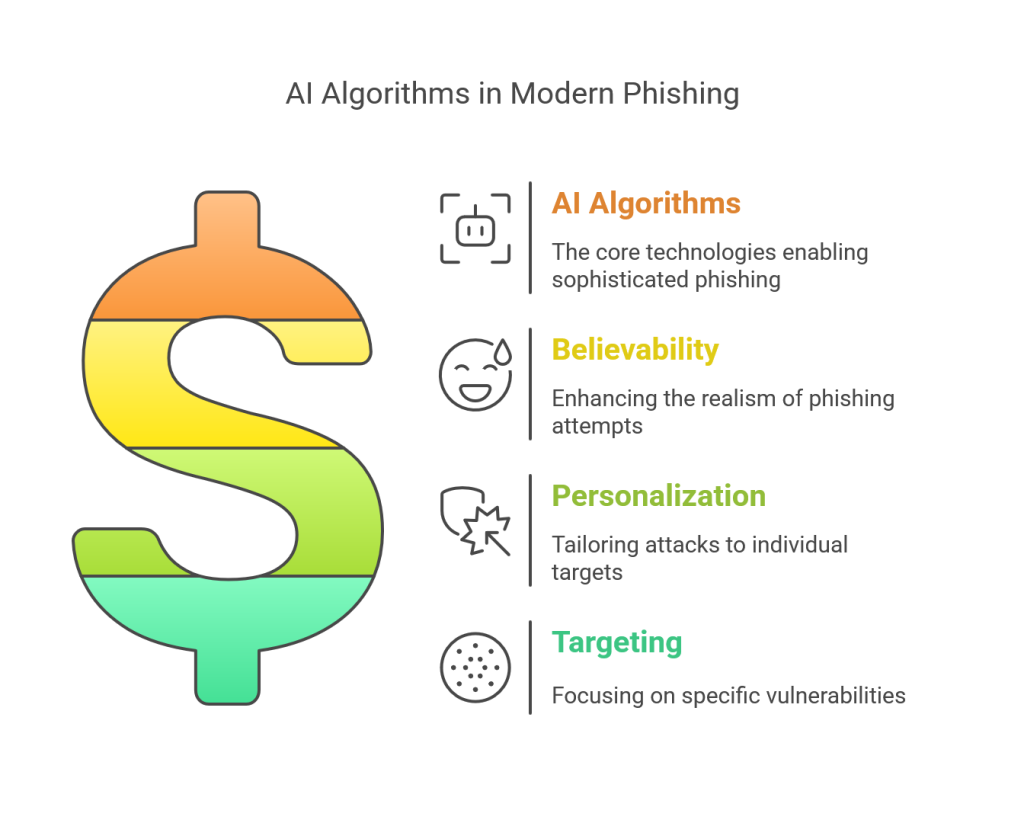To effectively counter the ever-evolving threat landscape of phishing attacks, it is imperative to comprehend the disparities between AI-powered phishing techniques and traditional methods. The integration of artificial intelligence has intensified the sophistication and personalized nature of these malicious schemes, making them harder to identify and thwart. Safeguarding against such contemporary cyber threats necessitates a comprehensive understanding of the distinct characteristics of AI-driven phishing in contrast to conventional strategies.
Composing Messages
Often, the generic character of traditional phishing communications makes them simple to identify. They are full of grammatical mistakes, strange wording, and simple layout. Usually relying on mass distribution, attackers hope that quantity will triumph over quality.
On the other hand, AI-driven phishing uses generative artificial intelligence technologies like ChatGPT to produce painstakingly produced, grammatically flawless messages that successfully imitate real communications. These AI-generated emails considerably lower mistrust among receivers by blending perfectly with real company or personal communications.
Individualization
Traditionally, conventional phishing assaults lack much personalization and sometimes include generic greetings such as “Dear Customer.” Often, the absence of particular information warns receivers of possible deception.
But artificial intelligence-driven phishing changes personalization by means of advanced data analysis. AI systems carefully customize messages to specific recipients by analyzing social media activity, internet behaviors, and hacked databases. Phishing tactics with this degree of personalization become more credible and successful, hence increasing the likelihood of victims succumbing to these sophisticated frauds.

Automation and Scale
Manual procedures or basic automation in traditional phishing campaigns naturally limit their volume and speed of attack execution.
On the other hand, AI-driven phishing uses machine learning algorithms to automate all facets of the phishing campaign, from creating tailored messages to fast distribution. Evolving constantly depending on past tries, these attacks get more complex and successful over time without much human involvement.
Means of Assault
Traditionally, phishing mostly uses email; sometimes it spreads to SMS or social media. Although efficient, these media lack credibility and reach.
AI-enhanced phishing brings new attack vectors like advanced voice or video impersonations as well as deepfakes. Techniques like “smishing” (SMS phishing) have proliferated, allowing con artists to take use of several communication channels at once. The outcome is a more widespread danger environment where attacks can happen anywhere and at any time.
Issues with Detection
Usually relying on signature-based techniques or heuristic analysis, detection systems for conventional phishing uncover recognized patterns inside harmful emails.
By producing new, dynamic material especially meant to escape detection, AI-driven phishing questions these traditional detection methods. AI’s flexibility guarantees that phishing emails closely resemble genuine correspondence, hence making conventional security measures insufficient and opening major new holes.
Psychological Manipulation
Often lacking complexity in exploiting human emotions successfully, traditional phishing methods depend mostly on fundamental psychological triggers like urgency (e.g., “Your account will close unless action is taken immediately”).
AI-driven phishing uses sophisticated natural language processing (NLP) to attack more subtle psychological weaknesses. These attacks exactly replicate the tone, style, and even emotional cadence of established and reputable organisations, hence increasing the credibility of their fraudulent communications and the difficulty of spotting them as threats.
Flexibility
Relatively static, traditional phishing techniques saw attackers rarely changing strategy depending on their success or failure. Once found, these techniques become simpler to counter.
Driven by artificial intelligence, phishing schemes show amazing flexibility by always learning from prior interactions and changing future assaults accordingly. The dynamic development of these techniques lets artificial intelligence phishing tactics to quickly change, staying several steps ahead of defensive strategies.
Final thoughts
AI’s inclusion into phishing has surely changed cyber threats by increasing their complexity, individualization, scalability, and adaptability. Though increasingly obsolete compared to AI-driven strategies, traditional phishing is still hazardous and poses a considerably more serious threat to cybersecurity.
The dynamic development of these techniques allows artificial intelligence phishing tactics to quickly evolve, outpacing defensive strategies. AI’s integration into phishing has elevated cyber threats by enhancing their complexity, individualization, scalability, and adaptability. While traditional phishing methods are becoming outdated in comparison, they remain perilous and pose a significant cybersecurity risk. Entities must implement advanced cybersecurity measures capable of effectively detecting and countering AI-generated threats to safeguard against these evolving attacks. Staying vigilant, informed, and proactive is essential in combating the continually shifting landscape of phishing attacks.
